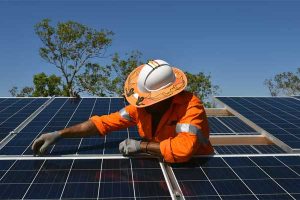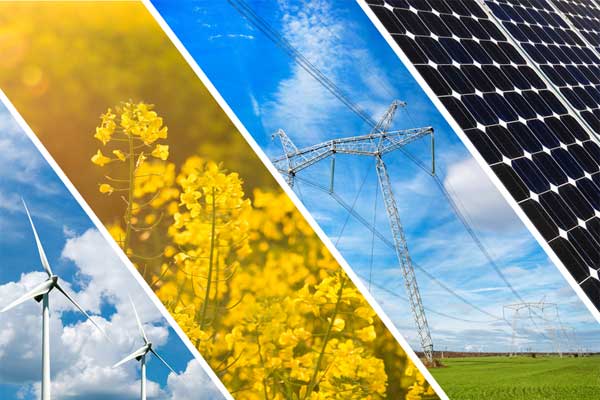Washington DC – Renewable energy sources (i.e., biomass, geothermal, hydropower, solar, wind) accounted for 18.49 percent of net domestic electrical generation during the first eight months of 2019, according to a SUN DAY Campaign analysis of just-released data from the U.S. Energy Information Administration (EIA).
A year earlier, renewables’ share was 17.95 percent.
The latest issue of EIA’s “Electric Power Monthly” (with data through August 31, 2019) reveals that solar and wind both showed continued growth.
Solar, including small-scale solar photovoltaic (PV) systems, grew 13.7 percent compared to the first eight months of 2018 and accounted for a bit more than 2.7 percent of total electrical output. Small-scale solar (e.g., distributed rooftop systems) – which increased by 19.1 percent – provided nearly a third (32.6 percent) of total solar electrical generation. The growth rate of distributed solar was greater than that of any other energy source.
In addition, U.S. wind-generated electricity increased by 4.4 percent, accounting for 6.94 percent of all electricity generated.

The price of new-build renewable energy is expected to fall significantly relative to new-build coal energy in coming years. (AAP Image/Lucy Hughes Jones)
Combined, wind power and solar energy accounted for almost a tenth (9.64 percent) of U.S. electrical generation through the end of August. In addition, biomass provided 1.4 percent (increasing by 2.5 percent) and geothermal contributed almost 0.4 percent (reflecting 3.2 percent growth).
In total, non-hydro renewable sources (i.e., biomass, geothermal, solar, wind) accounted for 11.44 percent of total U.S. electrical production during the first two-thirds of 2019 and grew by 6.15 percent compared to the same eight-month period in 2018.
Notwithstanding a 5.2 percent decrease in hydropower’s output, electrical generation by the mix of all renewables, including hydropower, was 1.49 percent higher than a year earlier.
By comparison, nuclear-generated electricity declined by 0.6 percent while that from coal plummeted by 13.9 percent. However, much of the latter was replaced by natural gas which grew by 6.5 percent.










Comments